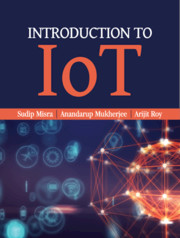9 - IoT Interoperability
Published online by Cambridge University Press: 09 January 2021
Summary
Learning Outcomes
After reading this chapter, the reader will be able to:
Understand the importance of interoperability in IoT
List various interoperability types
Identify the salient features and application scope of each interoperability type
Understand the challenges associated with interoperability in IoT
Comprehend the importance of real-world use of interoperability frameworks in IoT
Introduction
The introduction of billions of connected devices under the IoT environment, which may extend to trillions soon, has contributed massively to the evolution of interoperability. As more and more manufacturers and developers are venturing into IoT, the need for uniform and standard solutions is felt now more than ever before [1]. Figure 9.1 shows the various facets of interoperability in IoT. Interoperability is considered as the interface between systems or products—hardware, software, or middleware—designed in such a manner that the connecting devices can communicate, exchange data, or services with one another seamlessly irrespective of the make, model, manufacturer, and platform.
The urgency in the requirement for interoperability and interoperable solutions in IoT arose mainly due to the following reasons:
(i) Large-scale Cooperation: There is a need for cooperation and coordination among the huge number of IoT devices, systems, standards, and platforms; this is a long-standing problem. Proprietary solutions are seldom reusable and economical in the long run, which is yet another reason for the demand for interoperability.
(ii) Global Heterogeneity: The network of devices within and outside the purview of gateways and their subnets are quite large considering the spread of IoT and the applications it is being adapted to daily. Device heterogeneity spans the globe when connected through the Internet. A common syntax, platform, or standard is required for unifying these heterogeneous devices.
(iii) Unknown IoT Device Configuration: Device heterogeneity is often accompanied by further heterogeneity in device configurations. Especially considering the global-scale network of devices, the vast combinations of device configurations such as data rate, frequencies, protocols, language, syntax, and others, which are often unknown beforehand, further raise the requirement of interoperable solutions.
(iv) Semantic Conflicts: The variations in processing logic and the way data is handled by the numerous sensors and devices making up a typical IoT implementation, makes it impossible for rapid and robust deployment. Additionally, the variations in the end applications and their supported platform configurations further add to the challenges.
- Type
- Chapter
- Information
- Introduction to IoT , pp. 214 - 234Publisher: Cambridge University PressPrint publication year: 2021

